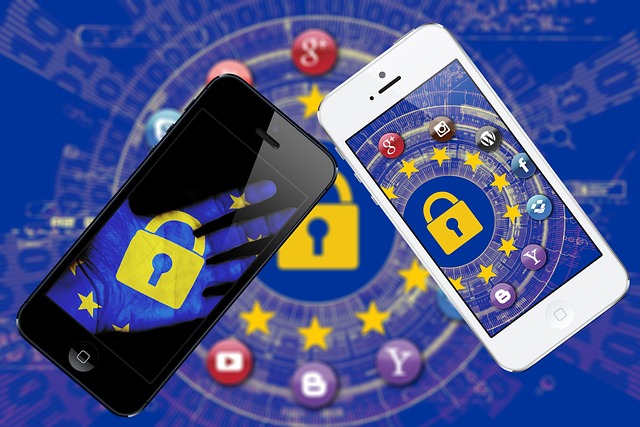When we talk about borders today, the image that often comes to mind is the physical line that separates one country from another. Yet the same concept of a boundary exists in cyberspace, where data flows freely across continents while being subject to a complex web of legal, cultural, and technological rules. These are the digital borders that shape how we communicate, share information, and build communities online. Understanding and respecting these invisible lines is essential for maintaining etiquette and fostering healthy digital interactions.
What Are Digital Borders?
Digital borders are the limits that govern the movement of information through networks. They arise from a mix of factors: national laws on data protection, regional regulations like the EU’s General Data Protection Regulation (GDPR), technical protocols such as the Internet’s routing systems, and cultural expectations about privacy and propriety. Unlike a wall, a digital border is porous; it can be negotiated, circumvented, or reinforced depending on context.
- Legal frameworks that define data residency and cross‑border data transfers.
- Technical controls such as firewalls, VPNs, and content filters.
- Cultural norms that influence how people communicate and what is considered polite online.
Legal and Ethical Dimensions
In many jurisdictions, the law determines how personal data can be stored and shared. For example, the GDPR imposes strict rules on transferring user data from the European Economic Area to other regions, especially those that lack adequate data protection safeguards. Businesses that fail to comply risk heavy fines and reputational damage. For individuals, understanding where your data is processed helps you make informed decisions about which services to trust.
“Respect for digital borders is not just compliance; it is a foundational ethic that protects privacy, ensures fairness, and maintains the integrity of online communities.”
Social Trends Shaping Digital Border Etiquette
The way people interact online is evolving rapidly. Two major trends are redefining what it means to navigate digital borders respectfully:
- Global Communities, Local Identities: Platforms like Discord, Reddit, and Telegram host cross‑border communities that blend global connectivity with localized cultural practices. Members often negotiate norms that respect both the platform’s global etiquette and the cultural nuances of their subgroups.
- Data‑Centric Conversations: As data becomes a central commodity, conversations about ownership, consent, and transparency have entered mainstream social discourse. This heightened awareness forces users to be more conscious of how they handle personal information, even within casual chats.
Practical Guidelines for Respecting Digital Borders
Below are actionable steps that individuals and organizations can adopt to demonstrate good digital border etiquette:
- Verify Data Residency: Before sharing sensitive data, confirm where it will be stored. Use services that offer data residency options aligned with your legal requirements.
- Use End‑to‑End Encryption: For private conversations, choose platforms that encrypt messages end‑to‑end. This protects your dialogue from interception at any digital border.
- Read Privacy Notices: Don’t skip the fine print. Understanding a platform’s data handling policies helps you make responsible choices about what to share.
- Respect Cultural Norms: When interacting in a multicultural setting, be mindful of language barriers, differing time zones, and local customs that may influence communication styles.
- Seek Consent for Data Use: Even in informal contexts, ask for permission before using someone’s content—especially when it could cross a digital border that might expose the original author to legal or cultural scrutiny.
- Choose Responsible Platforms: Support services that demonstrate transparency, comply with international regulations, and respect users’ rights to privacy.
Challenges in Adapting to Digital Borders
Despite the availability of best practices, several obstacles persist. First, the pace of technology innovation often outstrips regulatory frameworks, leaving users and developers navigating a gray area. Second, users may not fully understand how data travels across the internet, leading to inadvertent breaches of digital borders. Finally, cultural differences can cause misinterpretations of what constitutes respectful behavior online.
Addressing these challenges requires continuous education, transparent communication from platform providers, and cross‑border cooperation among policymakers. Communities that actively engage in dialogue about their expectations and concerns create a shared responsibility for maintaining ethical digital interactions.
Future Outlook: Emerging Digital Border Scenarios
Looking ahead, several emerging trends will further shape digital border etiquette:
- Artificial Intelligence and Data Sovereignty: AI models trained on global datasets raise questions about where training data originates and how it is shared. Ethically sourcing data and clearly labeling it will become critical.
- Metaverse and Spatial Borders: As virtual worlds expand, users will encounter new spatial metaphors for digital borders. Navigating these spaces will require an updated set of etiquette rules.
- Decentralized Networks: Blockchain and peer‑to‑peer protocols promise greater data autonomy but also introduce complexity in managing cross‑border interactions. Community‑driven governance models may provide a framework for respectful conduct.
In conclusion, digital borders are no longer a purely technical or legal concept; they are a lived reality that influences how we converse, collaborate, and build trust online. By understanding the layers that constitute these borders and adopting thoughtful practices, individuals and communities can maintain etiquette that respects privacy, culture, and legality. As technology evolves, so too must our collective commitment to navigating digital borders with care, empathy, and integrity.




